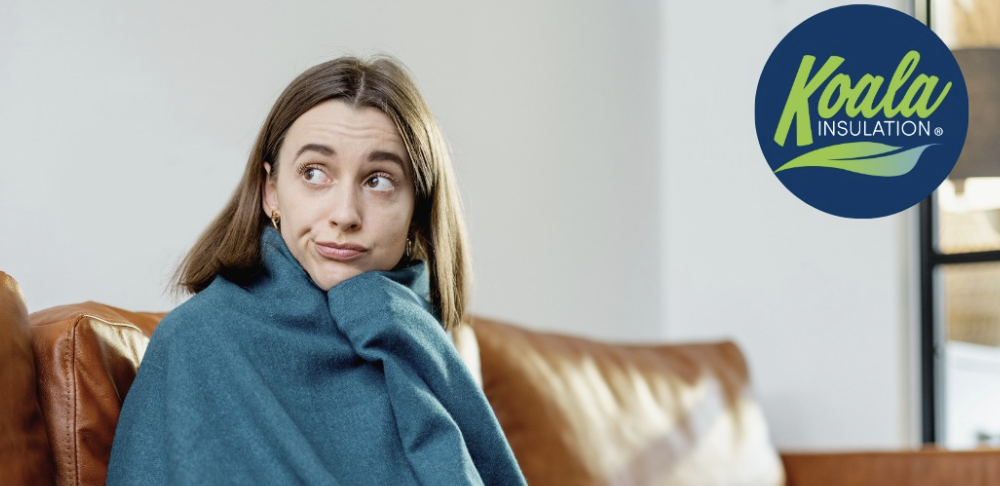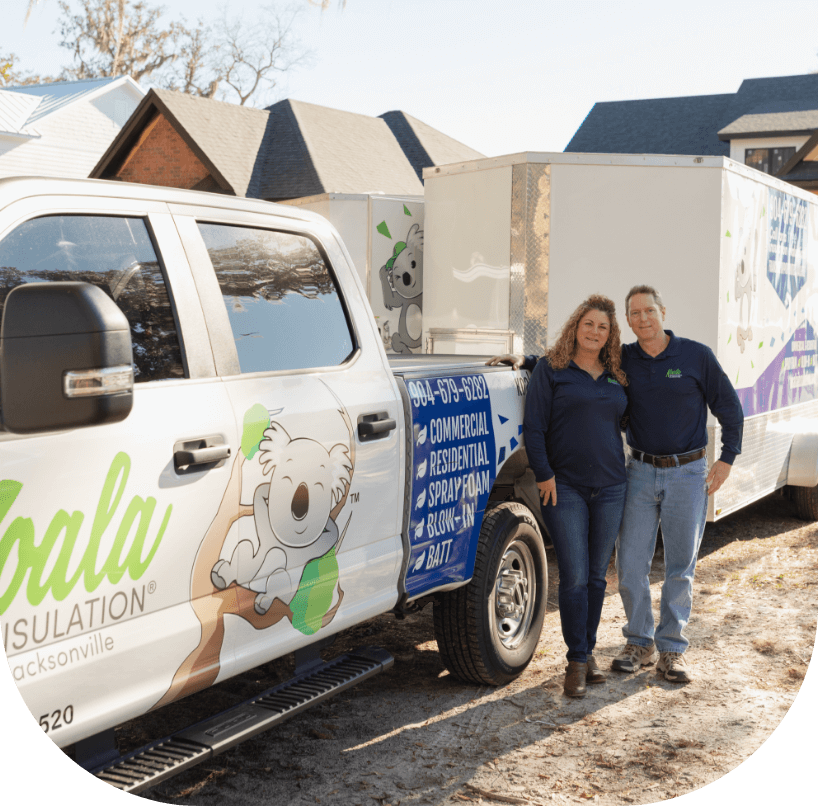
Remember Last Winter’s Chill? Act Now to Stay Warm This Year!
- August 21, 2024
Do you remember how cold it was in your home last winter? The drafty windows, the chilly floors, and the constant need to turn up the thermostat just to stay comfortable? If last winter left you shivering, now is the time to take action. Proper insulation can make all the difference in keeping your home warm and cozy, no matter how low the temperatures drop.
Why Last Winter Was So Unbearable: The Insulation Issue
If you found yourself bundling up indoors last winter, your home’s insulation—or lack thereof—might be the reason. Insulation works as a barrier that keeps the warm air inside and the cold air out, but when it’s insufficient or improperly installed, that barrier is compromised. The result? Heat escapes, cold air seeps in, and your heating system has to work overtime just to maintain a livable temperature. According to the Department of Energy, adding insulation to your attic, walls, and floors can significantly reduce heat loss and help maintain a more consistent indoor temperature.
Winterproofing Tips: Protect Your Home Before the Cold Hits
Before the chill sets in, there are a few winterproofing steps you can take to ensure your home stays warm and energy-efficient:
-
Seal Drafty Windows and Doors: Use weatherstripping or caulk to seal gaps around windows and doors where cold air can sneak in. This simple step can prevent drafts and help keep your home warmer.
-
Install or Upgrade Insulation: If your insulation is outdated or insufficient, consider upgrading to high-quality materials like spray foam or blown-in insulation. These options provide superior coverage and can fill in hard-to-reach areas where heat might be escaping.
-
Add Window Insulation Film: Applying a layer of insulation film to your windows can reduce heat loss and improve your home’s overall energy efficiency. It’s a cost-effective way to add an extra layer of protection against the cold.
-
Check Your Attic Insulation: The attic is one of the primary areas where heat escapes. Make sure your attic is properly insulated, as this can make a significant difference in keeping your entire home warm.
-
Install a Programmable Thermostat: A programmable thermostat allows you to set specific temperatures for different times of the day, helping you maintain comfort while optimizing energy use. Lower the temperature when you’re not home and have it warm up just before you return.
-
Insulate Pipes: Prevent frozen pipes by insulating any exposed pipes in your basement, attic, or crawl spaces. This not only protects your plumbing but also reduces the risk of costly repairs.
Explaining the Science Behind Insulation
How Insulation Works:
Insulation works by reducing the transfer of heat through walls, ceilings, and floors. The effectiveness of insulation is measured by its R-value, with higher values indicating better insulation performance. Homes in colder climates often require insulation with a higher R-value to effectively trap heat inside during the winter months. Understanding this can help you make informed decisions when upgrading or adding insulation to your home.
Comparing Different Types of Insulation
Insulation Options: Which One is Right for You?
Choosing the right insulation material can significantly impact your home’s comfort and energy efficiency. Here’s a comparison of the most common types:
-
Fiberglass Insulation: This is one of the most common and affordable options, ideal for areas like attics and walls. It’s easy to install and provides good thermal performance.
-
Spray Foam Insulation: Offering excellent coverage and sealing, spray foam is great for both new constructions and retrofits. It’s particularly effective at filling small gaps and cracks, ensuring that your home is well-insulated.
-
Blown-In Insulation: This insulation is perfect for filling hard-to-reach areas such as attics and wall cavities. It’s quick to install and provides thorough coverage, making it a popular choice for homeowners looking to improve their home’s energy efficiency.
-
Cellulose Insulation: Made from recycled paper, cellulose is an eco-friendly option that’s also effective in preventing air leaks. It’s treated to resist mold and pests, adding an extra layer of protection to your home.
The Real Cost of Ignoring Insulation Problems
Ignoring the insulation problem might seem like the easier option, but it comes with a hefty price tag. The longer you put off upgrading your insulation, the more you’ll end up paying in energy costs. Poor insulation forces your heating system to run longer and harder, which not only drives up your utility bills but also leads to unnecessary wear and tear on your HVAC system. And let’s not forget the most important cost of all—your comfort. A poorly insulated home can make you feel like you’re never truly warm, no matter how high you set the thermostat.
How Proper Insulation Can Transform Your Home’s Winter Warmth
Upgrading your insulation is one of the most effective ways to ensure your home stays warm throughout the winter. High-quality insulation materials, such as spray foam or fiberglass, provide an extra layer of protection that prevents heat from escaping. Not only does this keep your home warmer, but it also reduces the strain on your heating system, leading to lower energy bills. Plus, with a properly insulated home, you won’t have to constantly adjust the thermostat to stay comfortable.
Year-Round Benefits: Why Insulation Matters in Every Season
While staying warm during the winter is likely your primary concern, the benefits of proper insulation extend well beyond the cold months. Good insulation helps regulate your home’s temperature year-round, keeping it cooler in the summer and warmer in the winter. This means you’ll enjoy a more comfortable living environment no matter the season, and you’ll save money on energy costs throughout the year.
Long-Term Savings and Value
Long-Term Savings: Insulation as an Investment
Upgrading your insulation is more than just a home improvement project—it’s an investment in your home’s future. Proper insulation can significantly increase your home’s value, making it more attractive to potential buyers. According to HomeAdvisor, the average cost of replacing an HVAC system can range from $5,000 to $10,000, making insulation upgrades a more cost-effective investment in the long run. Additionally, the long-term savings on energy bills and reduced maintenance costs mean that insulation pays for itself over time.
Frequently Asked Questions (FAQs) About Insulation
FAQs: What Homeowners Need to Know About Insulation
Here are some common questions homeowners have about insulation:
-
How often should insulation be replaced? Most insulation lasts for decades, but it’s important to inspect it regularly for signs of wear, moisture damage, or settling. If you notice drafts or uneven temperatures, it might be time to consider an upgrade.
-
Can I install insulation myself? While some types of insulation, like fiberglass batts, can be installed by DIY enthusiasts, it’s often best to have a professional handle more complex installations, especially with spray foam or blown-in insulation. Professional installation ensures that the job is done correctly and that your home is properly insulated.
-
What is the R-value, and why is it important? The R-value measures the insulation’s ability to resist heat flow. The higher the R-value, the better the insulation’s effectiveness. Your home’s climate and specific needs will determine the ideal R-value for your insulation.
Don’t Wait: Now Is the Time to Insulate
The best time to upgrade your insulation is before the cold weather hits. By taking action now, you can avoid the discomfort and high energy bills that come with inadequate insulation. A professional insulation inspection can identify the areas where your home is losing heat and recommend the best solutions for your needs. Don’t wait until you’re shivering under a blanket this winter—reach out to Koala Insulation today and start preparing for a warmer, more comfortable season.
The Koala Difference: Why Choose Koala Insulation?
When it comes to keeping your home comfortable and energy-efficient, not all insulation companies are created equal. At Koala Insulation, we pride ourselves on delivering top-notch service, expert craftsmanship, and the best insulation solutions tailored to your home’s unique needs. Our team of trained professionals uses only the highest quality materials, ensuring that your insulation is not just effective, but also durable and environmentally friendly. We offer comprehensive inspections, transparent pricing, and a commitment to customer satisfaction that sets us apart from the competition. Whether you’re dealing with scorching summers or freezing winters, Koala Insulation has the expertise to make your home a sanctuary of comfort year-round.
Experience the Koala Difference and see why homeowners trust us to keep their homes warm, efficient, and cozy. Schedule your free insulation inspection today!

Recent Posts
-
Water Damage and Insulation: Expert Solutions to Protect Your Home and Prevent Future Issues
Read Article -
Unlock Savings with the Inflation Reduction Act: How Insulation & Solar Attic Fans Could Boost Your Home’s Efficiency
Read Article -
Remember Last Winter’s Chill? Act Now to Stay Warm This Year!
Read Article -
The Hidden Costs of Poor Insulation: How to Save Money Year-Round
Read Article -
Is My Home Well Insulated? Key Signs and Expert Tips for Energy Efficiency from Koala Insulation
Read Article

Be Your Own Boss.
Secure Your Future.
Make A Difference.
Becoming a Koala Insulation franchise owner offers life-changing benefits. A low initial investment and extensive training makes it easy to start your own franchise and find success. Get started today!
Schedule A Call
Why a Koala Insulation Franchise Simply Makes Sense
Ready to take the leap into franchising?
-
Be in control of your financial future and have ample opportunity to increase your net worth.
-
Joining an already successful brand means a lower failure rate.
-
Own an asset that pays dividends and can be sold for more in the future.
-
Get a proven business model and strategies instead of learning on your own.
-
Have complete control over your career, hours, and investment.
-
Be the first to tap into untapped territories you can later expand on.
-
Your reputation and brand name recognition are already established.
-
Senior leadership in the Koala franchise system has over 40 years of franchising experience.